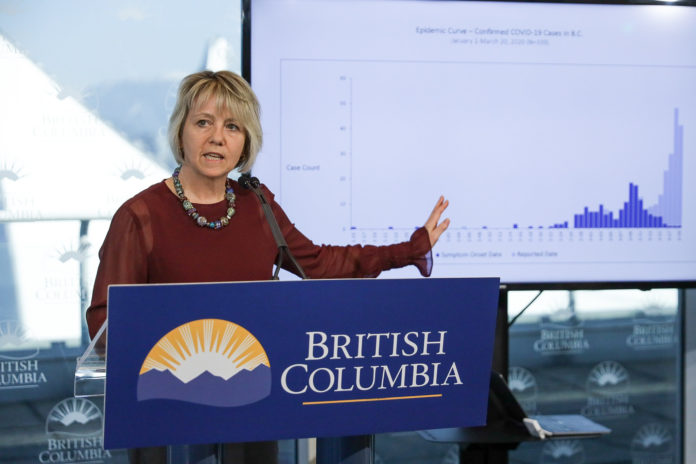Modelling data presented by health authorities on Friday morning shows that the rate of new cases British Columbia’s has flattened.
According to provincial health officer Dr. Bonnie Henry, the flattening of B.C.’s epidemic curve is owed mostly to stringent public health measures like travel restrictions, school and business closures, and physical distancing directives.
Based on modelling data presented today, the number of new cases of COVID-19 in B.C. started to decrease two weeks after these public health measures were introduced.
The grey area highlighted in the graph below shows the period of time during which provincial health orders started to restrict people’s movement:
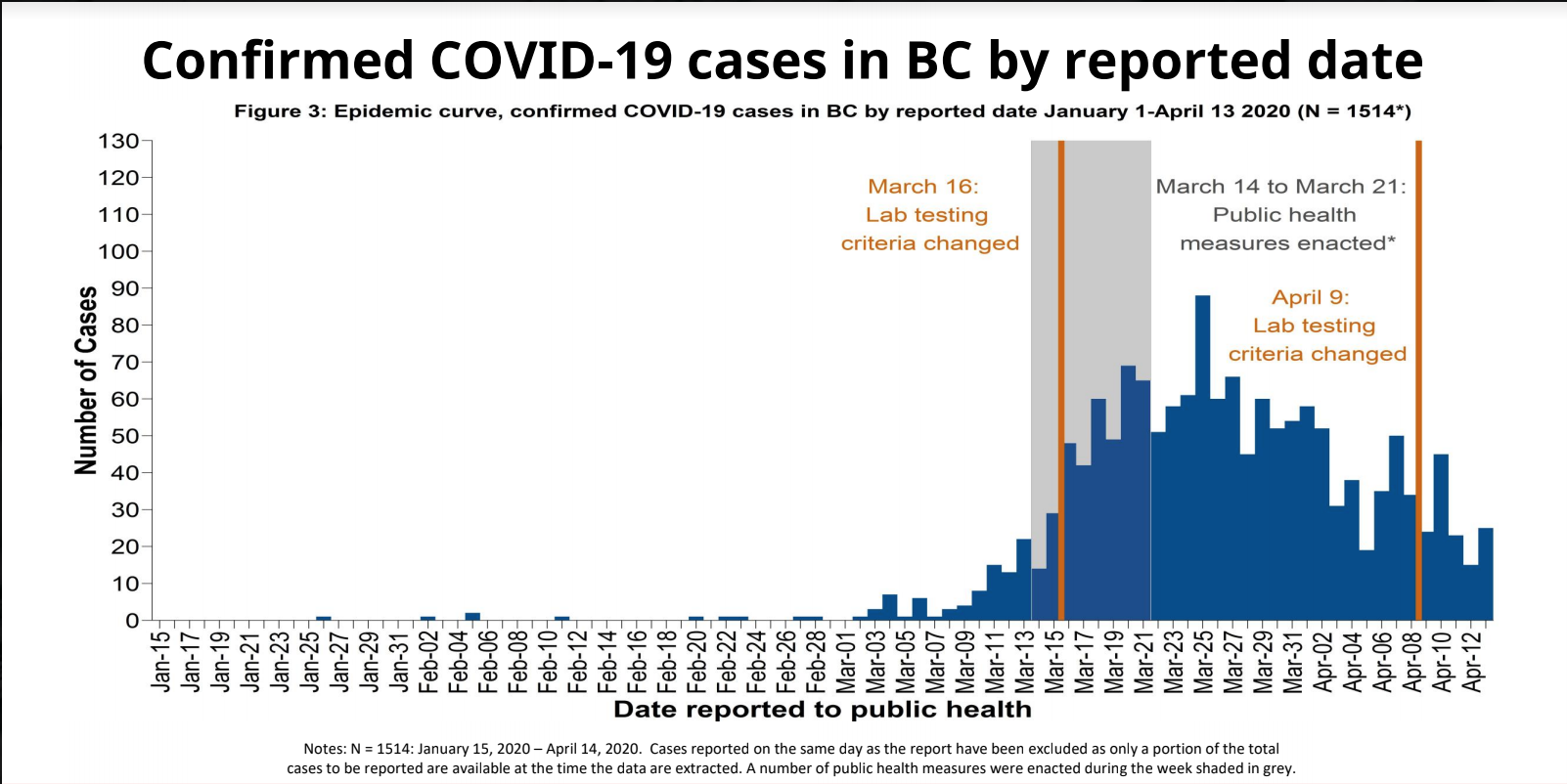
At the beginning of the epidemic in B.C., public health officials were conducting broad tests in the community after testing became available on January 20th when China released their genomic sequencing of the virus.
On March 16th, the strategy switched to testing that focused on long term care facilities, health care workers and community outbreaks. Then on April 9th, health officials went back to testing more widely and contact tracing to determine the scope of the virus in recent weeks.
The majority of people who have tested positive for COVID-19 in the province have been in their 70s, 80s, and 90s, and female.
Dr. Henry clarified that approximately 54 per cent of those who tested positive were female due to the focused testing of health care workers, most of whom are women.
A flattened curve
Overall, when compared to other countries and other provinces in Canada, British Columbia’s COVID-19 curve has flattened and started to decline.
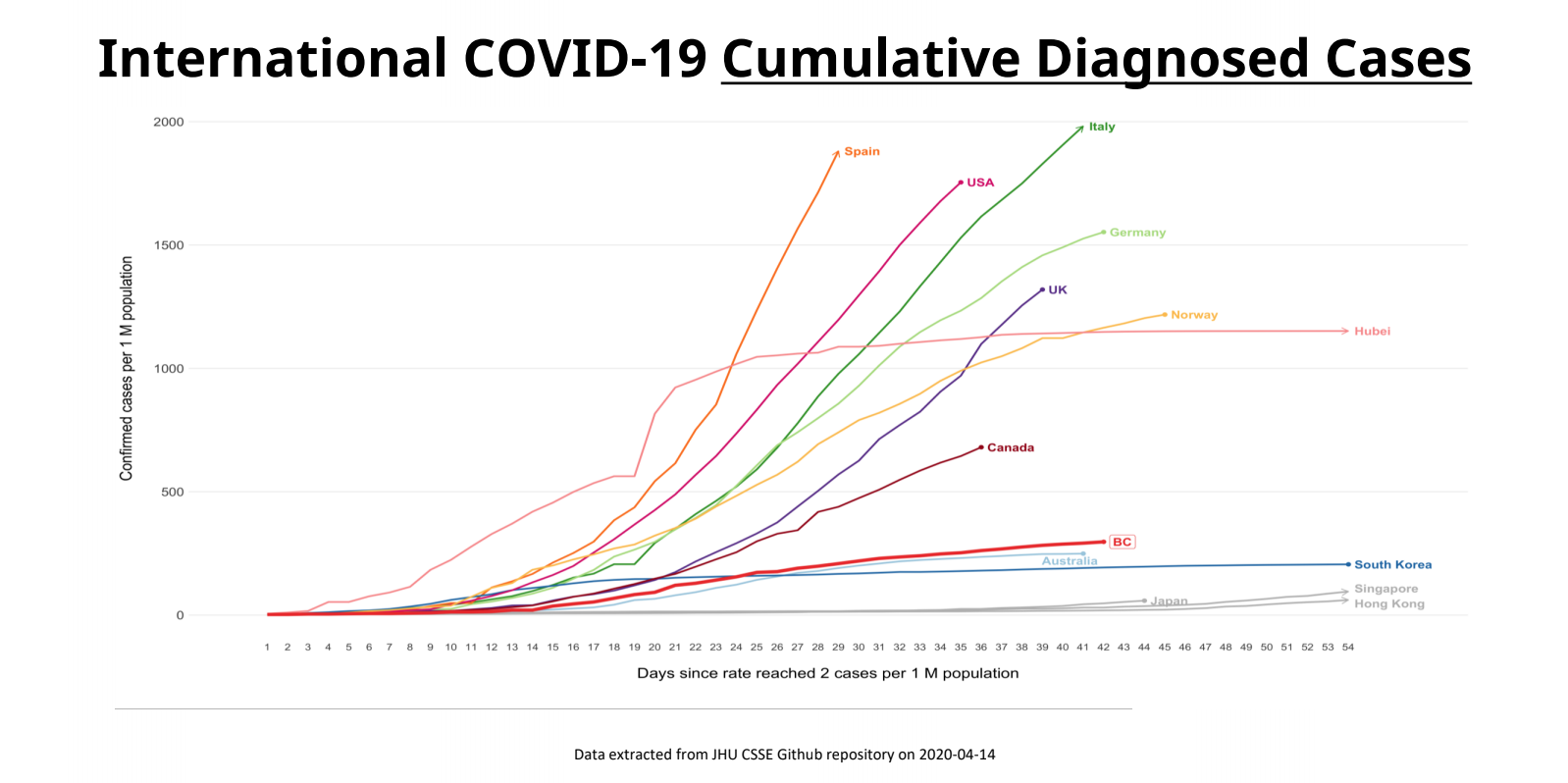
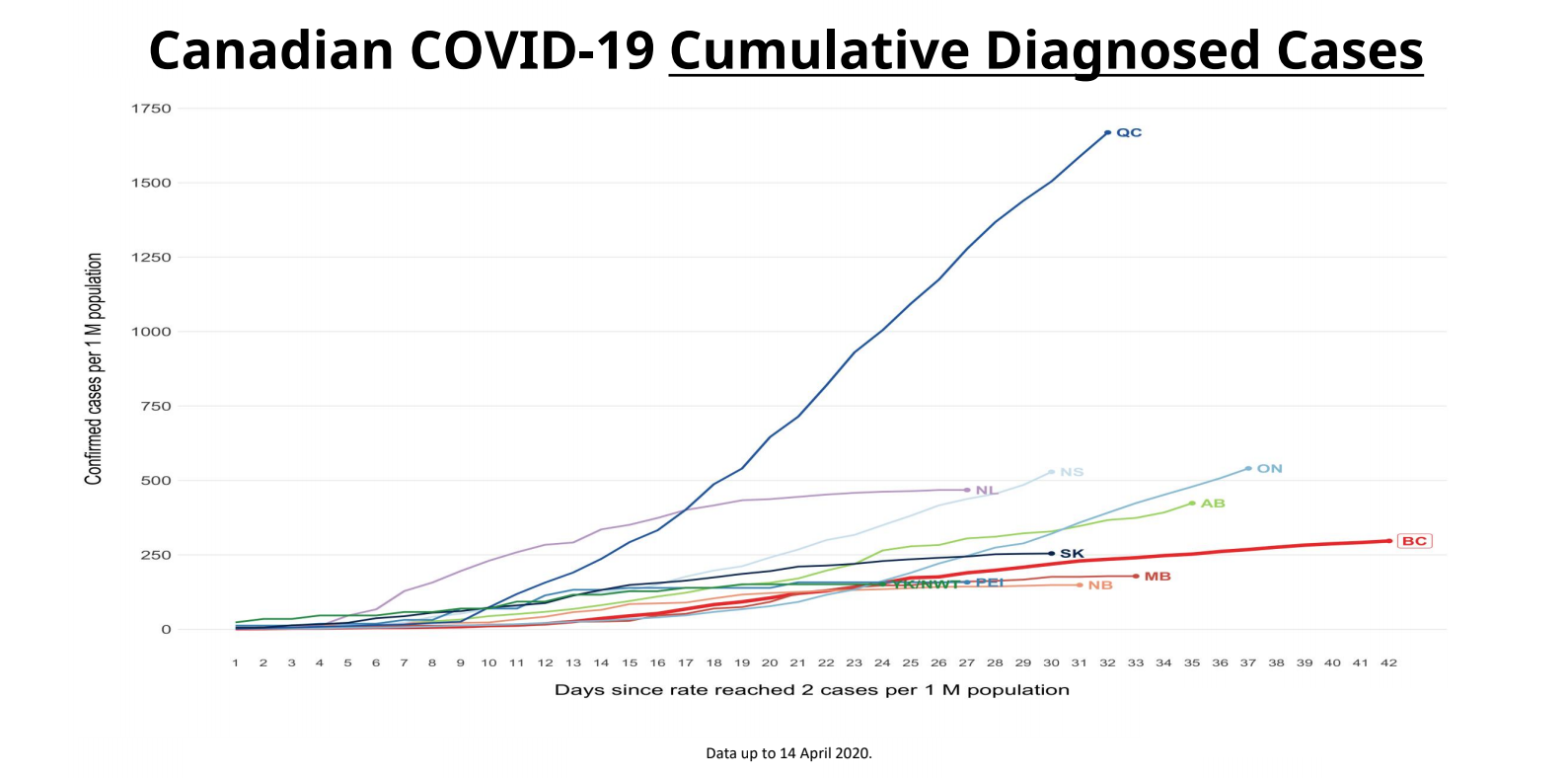
The data also shows that the number of COVID-19 patients admitted to critical care units has also plateaued for approximately 20 days.
According to Deputy Health Minister Stephen Brown, this can be attributed to measures taken by critical care specialists in B.C. who have been treating patients with severe symptoms by placing them on ventilators earlier.
However the number of COVID-19 deaths per day in the province have yet to level out.
“We are at the point in our pandemic right now where there are people who are sick or have been exposed and it takes three to six weeks to know whether people are going to recover quickly. We are unfortunately going to see more deaths in the future,” said Dr. Henry.
Fortunately though, B.C. has not seen a dramatic increase in the death rate that has been observed in other countries and provinces in Canada.
The success story of the pandemic in British Columbia is attributed by and large to the draconic public health measures that were implemented early on before there was a large spike in cases.
The graph below shows how people’s movement has changed over the past month as health measures began to be implemented:
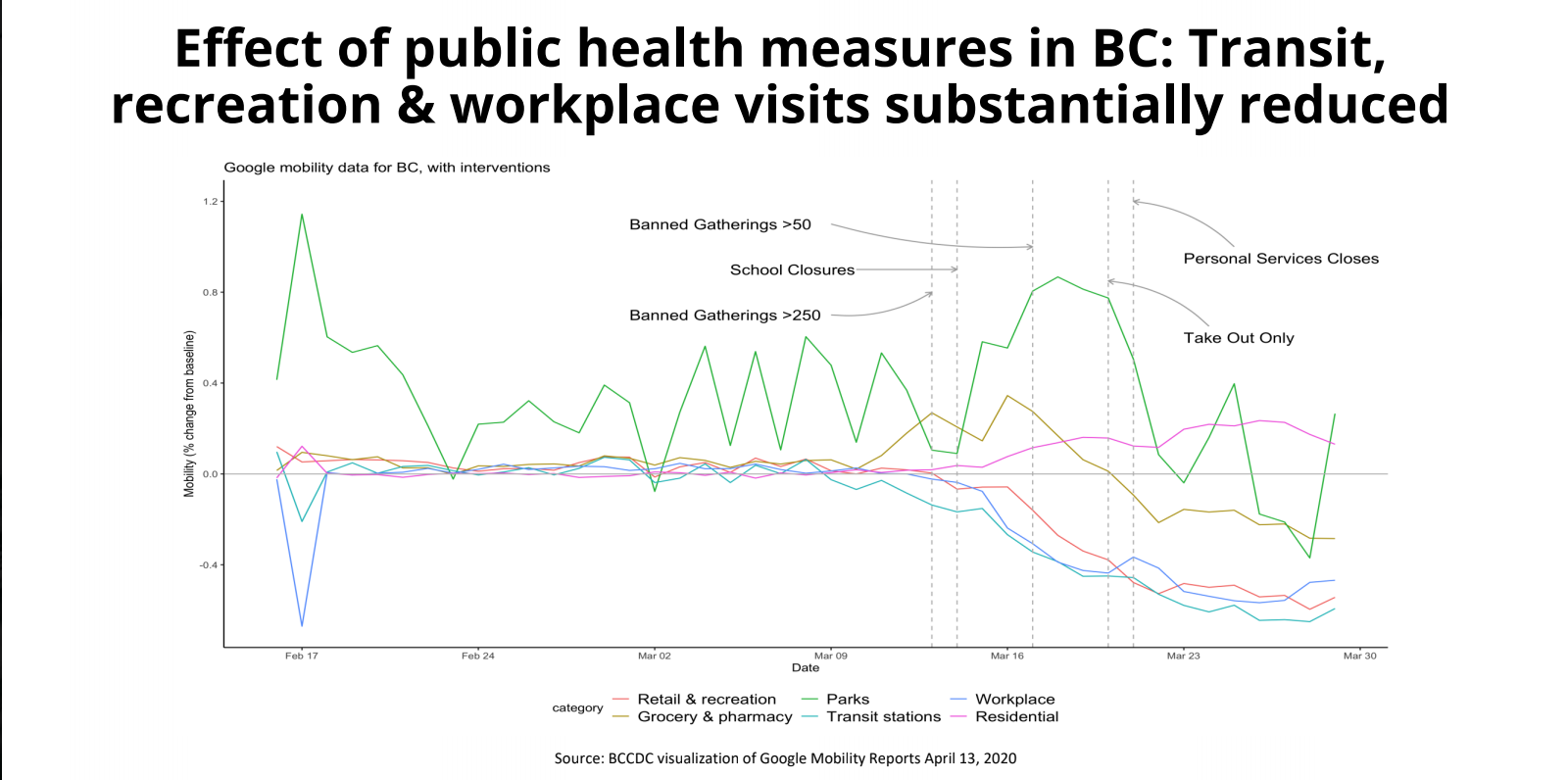
Next steps
The province now plans to ramp up COVID-19 testing and contact tracing. Deputy Minister Brown says authorities will continue to stock up on ventilators and build up the province’s critical care capacity to prepare for a second wave of the outbreak that may occur in fall and winter.
Public health officials are also looking at when and how to start lifting some measures that have adversely affected the population.
“We’re preparing to restart scheduled surgeries, as well as continue with urgent and emergent surgeries, contingent on things remaining steady as they are and if we don’t experience a surge [in cases],” said Brown.
However there are a number of milestones the province has yet to achieve before authorities can consider lifting some more restrictions.
According to Dr. Bonnie Henry, we now need to see a continued decrease in numbers of new cases per day, no new outbreaks, and a decreasing number of people admitted to hospital for COVID-19.
Additionally, there needs to be an appropriate amount of testing available, — “we’re getting there,” she said on that score — and serology testing to be able to tell where community cases are originating from.
“Then we can thoughtfully and carefully lift some of the restrictions over time.” Restrictions will not start be lifted in B.C. until the middle of May.
Dr. Henry clarified, however, that some lifestyle changes will need to stay in place for the next 12 to 18 months.
For example, travel for business purposes, like attending conferences, cannot take place until there is a vaccine or “until we have a sense that this virus is going to calm down”.
Restrictions will remain in place at the Canadian border for the near future and travel limitations will continue to be enforced to prevent new infections coming in from other parts of the world.
For now, the public must keep adhering to the rules of physical distancing that are already in place until directed otherwise, as there is still a potential for a surge in cases and deaths.


